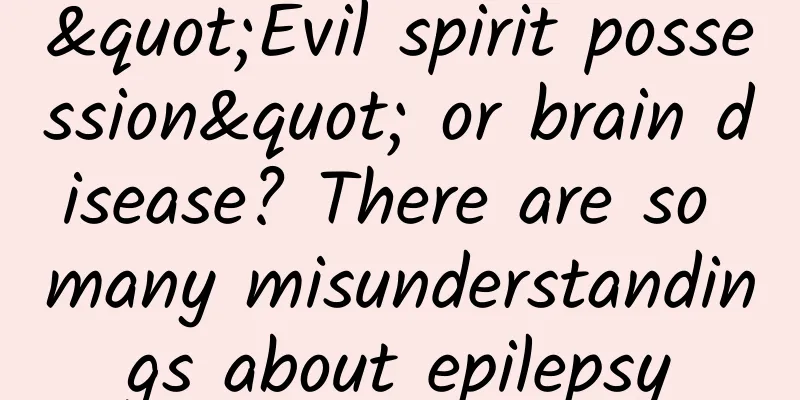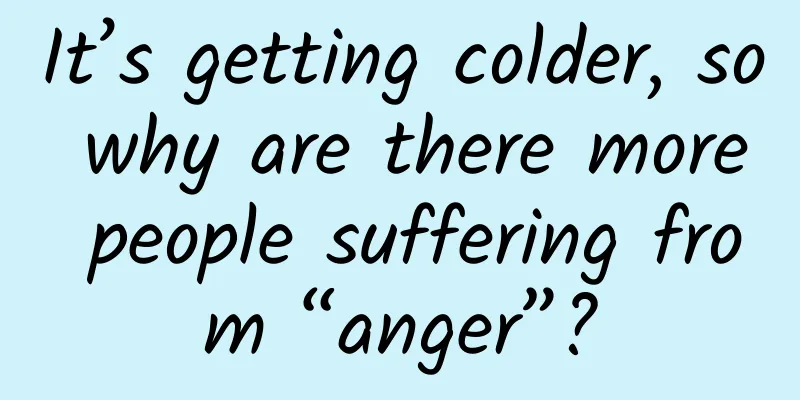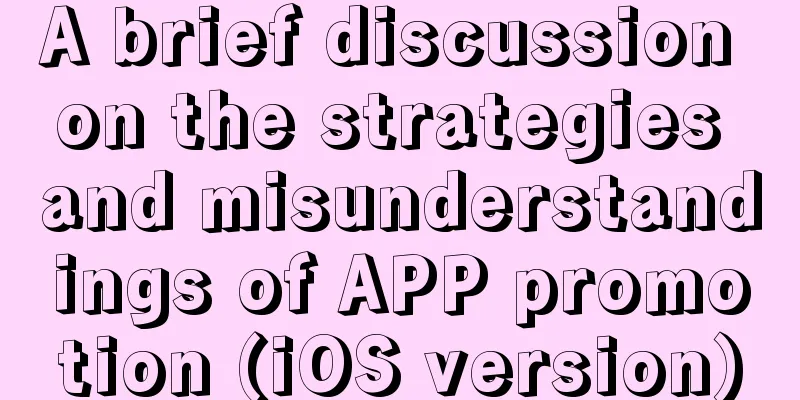"Evil spirit possession" or brain disease? There are so many misunderstandings about epilepsy

|
The word epilepsy comes from the Greek epilambanein, which means "to seize" or "to attack." Since ancient times, many cultures have described this disease in a mysterious or supernatural way. For example, the ancient Babylonians believed that people with this disease were "possessed by evil spirits" and the only way to cure it was through the power of God. Today, the development of modern medicine has enabled us to have a more scientific and profound understanding of epilepsy, a chronic, non-communicable brain disease. An epileptic seizure is caused by an abnormal discharge of a group of brain cells. Different parts of the brain can be the site of the abnormal discharge. Seizures can range from a very brief loss of consciousness or muscle reflexes to severe and prolonged convulsions. The frequency of attacks can also vary, from less than once a year to several times a day [1]. Epilepsy is the second largest neurological disease after stroke. According to data from the World Health Organization, more than 50 million people suffer from epilepsy worldwide, and there are approximately 9 million epilepsy patients in China [2]. However, due to social misunderstandings about the disease, epilepsy often faces a high degree of stigma, and many epilepsy patients also suffer from considerable social and psychological pressure, which greatly affects their physical and mental health. 1. Misunderstandings about epilepsy Misconception 1: Patients with whole-body convulsions are equivalent to patients with epilepsy Most people believe that the symptoms of epilepsy are sudden loss of consciousness and whole-body convulsions, but in fact, due to the different starting sites and transmission methods of abnormal discharges, the clinical manifestations of epileptic seizures are complex and diverse. The seizures characterized by sudden loss of consciousness and generalized rigidity and convulsions are generalized tonic-clonic seizures. Other seizures include myoclonic seizures similar to electric shock-like shaking of the body or limbs; absence seizures characterized by cessation of movement, staring, and unresponsiveness to calls (mainly seen in childhood absence epilepsy); complex partial seizures characterized by impaired consciousness and automatism, etc. Secondly, whole-body convulsions are not unique to epilepsy. Many sudden events can be easily confused with epileptic seizures, especially syncope, migraine, cerebrovascular disease, hypocalcemic seizures, febrile seizures in children, and hypoglycemic seizures. Neurologists usually need to determine which events are epileptic seizures through a detailed medical history and physical examination, electroencephalogram, and magnetic resonance imaging results [3]. It is important to note that epileptic seizures in children are relatively short-lived, with atypical symptoms that are often difficult to detect. During an attack, children usually suddenly stop speaking and moving, stare with their eyes, and drop objects in their hands. These atypical symptoms can easily be mistaken by parents as a lack of concentration. Currently, EEG examinations are the most important means of diagnosing epilepsy and epileptic seizures. Therefore, once parents suspect that their children have epilepsy, they should diagnose and treat them as soon as possible. Myth 2: People with epilepsy cannot have children Many epilepsy patients worry about fertility. First of all, it must be pointed out that epilepsy is by no means a contraindication to pregnancy. In fact, most women with epilepsy can successfully become pregnant and give birth to healthy children under the guidance of a doctor, provided that their epilepsy symptoms are well controlled. However, due to the additional risks of epilepsy to the mother and fetus, the following two points should be noted: 1. Studies have shown that women with epilepsy who experience epileptic seizures within a year before pregnancy are 3-4 times more likely to continue to have seizures during pregnancy than women whose epileptic seizures were completely controlled before pregnancy [4]. Pregnant women with epileptic seizures during pregnancy not only threaten their own safety, but may also directly cause fetal hypoxia and distress. Before epilepsy symptoms are well controlled, please take comprehensive and safe contraceptive measures (there are complex interactions between oral contraceptives and most anti-epileptic drugs, so the World Health Organization recommends that epileptic patients who wish to avoid taking combined contraceptives containing estrogen and progesterone [5]); 2. Because some anti-epileptic drugs have varying degrees of impact on the fetus and may even cause fetal malformations , many international guidelines recommend that women with epilepsy should plan for pregnancy[6], seek regular pre-pregnancy consultation and intra-pregnancy checkups from obstetricians and neurologists, and make timely adjustments to anti-epileptic drugs and supplement folic acid and other drugs. 2. Misconceptions about epilepsy treatment Myth 1: Epilepsy is an incurable disease Epilepsy is very difficult to treat and is prone to relapse, so many patients believe that epilepsy is an incurable disease. However, after receiving appropriate anti-epileptic drug treatment, approximately 70% to 80% of epilepsy patients can be well controlled by medication (i.e., completely eliminating epileptic seizures without drug side effects), while the 20%-30% of patients whose condition cannot be controlled by medication can be evaluated to determine whether they are suitable for epilepsy surgery[7]. Many factors that lead to poor treatment results for epilepsy patients include irregular treatment, unauthorized discontinuation of medication, and belief in folk remedies, which in turn aggravate the clinical symptoms and complicate the condition. Myth 2: You only need to take medicine when you have an epileptic seizure In clinical practice, some patients believe that they only need to take medicine when they have an attack, and they can stop taking it when they don’t have an attack, so it is very common for them to stop taking or reduce their medication without authorization. However, the temporary absence of epilepsy may be just the continued inhibitory effect of the residual amount of medicine. During the drug treatment of epilepsy, the principle of slow dosage increase and slow withdrawal should be followed . Usually, drug reduction can be considered only after the symptoms are under control for several years. Blindly stopping or reducing medication can easily lead to the ineffectiveness of anti-epileptic drugs, increase the risk of recurrence, and even develop into refractory epilepsy. Therefore, epilepsy patients must follow the doctor's advice when taking anti-epileptic drugs, take them on time and in the prescribed dosage, and have regular follow-up visits. The doctor will conduct a comprehensive assessment based on the frequency of clinical seizures, the severity of symptoms, physical examinations, and objective examinations to determine the timing and plan for reducing or stopping medication [8]. 3. Wrong first aid methods during epileptic seizures Wrong method 1: pinching the Ren philtrum During an epileptic seizure, due to abnormal discharge of brain cells, the patient will experience brief involuntary convulsions and loss of consciousness. The convulsions will stop only when the abnormal discharge stops. Therefore, pinching the patient's philtrum will not help relieve the patient's symptoms. Instead, it will cause damage to local tissues and delay other effective treatments. Wrong method 2: Pry open the mouth and stuff it in When a patient is convulsing, his or her jaws may be tightly closed. Many people worry that the patient may bite his or her tongue, so they forcefully pry open the jaws and place items in them. However, during an epileptic seizure, the patient's strong masseter muscles close, and this improper operation can cause the patient's teeth to fall out and damage the oral mucosa. The items stuffed into the mouth may be bitten off, and the broken items may block the airway and cause suffocation, thus endangering life. Therefore, do not force foreign objects in. Instead, keep the patient's airway open during an epileptic seizure . Wrong method three: cardiopulmonary resuscitation Both epileptic seizures and cardiac arrest can cause similar symptoms such as loss of consciousness, unresponsiveness to calls, and transient convulsions, but epileptic patients still have breathing and heartbeats, so the rescue methods for the two are completely different. If cardiopulmonary resuscitation is performed incorrectly on an epileptic patient, it will not only be ineffective, but may also cause the patient to suffer rib fractures, internal organ damage, or even cardiac arrest. Therefore, when encountering patients with similar symptoms, you need to immediately determine whether the patient has any response, whether the chest is rising and falling, whether there is breathing sound from the mouth and nose, whether there is a pulse (non-professionals can skip this step), etc., while ensuring the safety of the surrounding environment, and then perform appropriate first aid operations. Wrong method 4: forcibly pressing the patient's limbs Generally speaking, the convulsions of epileptic patients are transient and will be relieved after a few minutes. However, pressing the patient's limbs hard when the patient is convulsing may cause fractures or soft tissue injuries. The correct way to do it is: 1 Move the patient to a safe place as soon as possible and remove any sharp objects, glassware, sharp metal objects, etc. on and around the patient that may cause injury. 2 Assist the patient to lie down slowly to avoid falling, tilt the head to one side, loosen the patient's collar and belt, and keep the airway open. 3 During the several minutes that the epileptic seizure lasts, do not move the patient at will, remain calm and quiet, protect the patient, and prevent additional harm to the patient from the surrounding environment. 4 If you think any emergency has occurred that you cannot handle, call 120 immediately to seek professional medical assistance, such as: the patient's convulsion lasts for more than 5 minutes; the patient suffers trauma during the seizure; there are two consecutive seizures and the patient does not regain consciousness between seizures, etc. References: [1]Berg AT, Berkovic SF, Brodie MJ, et al. Revised terminology and concepts for organization of seizures and epilepsies: report of the ILAE Commission on Classification and Terminology, 2005–2009. Epilepsia. 2010;51:676–685. [2]Gourie-Devi M, Gururaj G, Satishchandra P, Subbakrishna DK. Prevalence of neurological disorders in Bangalore, India: a community-based study with a comparison between urban and rural areas. Neuroepidemiology. 23 2004; 261-268 [3]Smith MC, Buelow JM. Epilepsy. Dis Mon. 1996 Nov;42(11):729-827. [4]Predicting epileptic seizure control during pregnancy. Epilepsy Behav 2018;78:91-95. [5] Sales Vieira C, Pack, Roberts K, Davis AR. A pilot study of levonorgestrel concentrations and bleeding patterns in women with epilepsy using a levonorgestrel IUD and treated with antiepileptic drugs. Contraception 2019;99:251–255. [6]Abe K, Hamada H, Yamada T, Obata-Yasuoka M, Minakami H, Yoshikawa H. Impact of planning of pregnancy in women with epilepsy on seizure control during pregnancy and on maternal and neonatal outcomes. Seizure. 2014 Feb;23(2):112-6. doi: 10.1016/j.seizure.2013.10.003. Epub 2013 Oct 17. [7]Ali A. Global Health: Epilepsy. Semin Neurol. 2018 Apr;38(2):191-199. doi: 10.1055/s-0038-1646947. Epub 2018 May 23. [8]Thijs RD, Surges R, O'Brien TJ, Sander JW. Epilepsy in adults. Lancet. 2019 Feb 16;393(10172):689-701. END Author: Wen Jia, Ph.D. in Anesthesiology, Capital Medical University |
<<: When a typhoon strikes, how should offshore wind power respond?
>>: Is the weight you lose when you are sick actually a form of immune “protection”?
Recommend
Whether you want to lose weight or maintain your figure, don’t fall into these “nutritional misunderstandings”!
Xiaofang is a girl who loves beauty. In order to ...
From the "May Day" routine of operation, let's see how to "take advantage of the festival"
Not long after Qingming Festival, May Day comes. ...
Tik Tok marketing promotion advertising model!
What are the marketing methods of Tik Tok? What p...
4 new media writing suggestions that you may need!
The popularity of WeChat has also brought about a...
The late spring cold has gone and the south wind has returned. What should we do with such bad weather?
After enduring the late spring cold in the north,...
"2017 Mid-Year OTT Operation Big Data Blue Book" released: OTT diverts traditional TV advertising budgets and becomes an industry trend
On August 22, 2017, the "2017 Mid-term OTT O...
Zhou Wenqiang training video collection
List of all Zhou Wenqiang's speech videos: A-...
Twin brothers in Wuhan both scored 664 points in the college entrance examination. Do they have the same IQ? What do the experts say?
The college entrance examination results came out...
Is eating crabs and oranges together like eating arsenic? Here is a guide to debunking the myth about eating crabs!
Will eating crabs and persimmons together cause d...
8 steps and 5 stages to build a private community SOP from 0 to 1
There is more and more consensus on doing private...
JD.com, which holds big data, wants to further increase the value of data
Since the whole society entered the Internet era,...
How does the Guangzhou Financial Mini Program work? How to promote financial WeChat mini-programs?
With the development of mobile Internet, finance ...
How does Baidu bidding respond to the reduction in promotional spaces?
Introduction Recently, some changes have taken pl...
Wei Jianjun became an Internet celebrity at the age of 60 and jumped to the front stage for Great Wall, but is Great Wall really just lacking "traffic"?
Before April this year, how much did you know abo...
The State Administration of Radio, Film and Television strictly controls OTT installation manufacturers, each with its own countermeasures to skirt the rules
Recently, the State Administration of Radio, Film...









